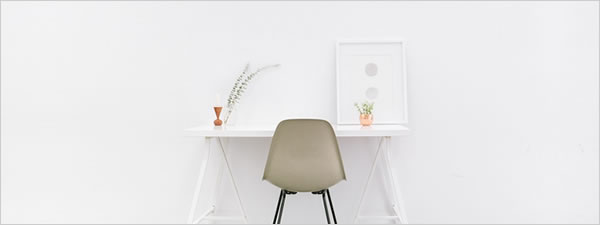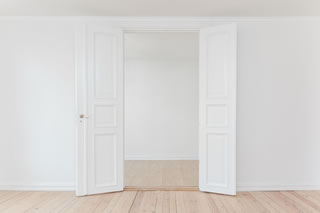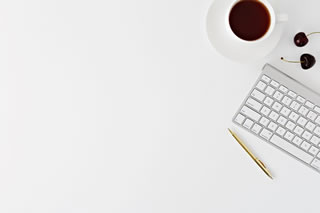Should you try minimalism?


Post-World War two saw a new art movement emerging. Prevalent in art and interior design, it is now a lifestyle that many people have adopted, and they are enjoying the simplicity that accompanies it. But what is minimalism and is it something that you could actively achieve in your life? “Something I love about minimalism is that it is adaptable. I think people outside of minimalism see it as this structured rigid thing that has very specific rules, but it isn't like that at all”, Patricia from A Small Wardrobe shares. Downsizing on your belongings allows you time to focus on elements of your life which may have been overshadowed by worry.
For many, minimalism is a trend which can be seen on feeds of Instagram influencers for little more than aesthetics. However, to Patricia, there were many more factors that contributed to her decision to live minimally, including the ability to define her own needs and desires. “One of the issues of living in a consumption-driven society is that we are told we need 'more' of everything. When I consciously choose to limit what I own and acquire, I have no choice but to prioritise what I value the most. This reduces decision making in all areas and inherently leads me to a calmer life. I can be more deliberate with my time because I am used to making decisions about what is most important to me.”

With the festive season approaching, over-the-top decorations and indulging in new items for around the home is considered commonplace. However, with this comes untidiness – busy mantlepieces, crammed cupboards and, come January, the dread of finding a place to store your Christmas clutter. After moving to a new house in 2016, Patricia began the transition to minimalism. “I bought a modern white apartment and decided I needed to do away with my old wooden furniture because it did not suit the decor. This began a period of acquiring that eventually proved to be overwhelming. I realised that purchasing and owning material things was a lot of work. It was after this that I began to consciously limit my purchases and declutter my belongings.”
Minimalist homes strip rooms back to basics. The kitchen is one of the easy rooms to tackle first, as the removal of unnecessary objects from counter tops makes the room appear larger. “It is best to start small by targeting a specific part of your life that you are not happy with. If your kitchen is a mess, you could start by decluttering your pots and pans” says Patricia. Another benefit of having fewer items around your kitchen is that it becomes easier to clean, allowing you to stay on top of your household chores without items catching dust, which is especially important in a room such as a kitchen. Sifting through your kitchen cupboards, it is also likely that you’ll find food that you’re either unlikely to cook or has gone past its use-by date. Organising your food will give you a better idea of what you have to use up, meaning that you can create meal plans for the week and reduce your amount of food waste!
When it comes to living rooms and bedrooms, you may have certain keepsakes and heirlooms that you can’t bear to part with. However, minimalism does not mean that you need to de-personalise your home. “Sometimes our lives can be so cluttered with what we want to buy, what we want to do, and who we want to be,” shares Patricia. “By choosing to live with less, I have been able to limit distractions and figure out what matters the most to me”.
Signe from Use Less loves how liberating it feels to let go of physical things that you no longer need, but also appreciates that some items come with a sentimental value that cannot be replaced. “You need to figure out what is valuable to you in life. Also, it’s not a competition about owning a certain number of items, or in general owning as little as possible. It’s simply about only holding on to the things that really mean something to you.”

For Signe, the process to become a minimalist took a while: “It all started 5 years ago because I realized that I was spending too much money, time and energy on things that didn’t fill my needs in the long run, all while working in positions and jobs that didn’t bring me any joy whatsoever. I felt stuck in the wheel, and I wasn’t happy.”
One of the traditional definitions of minimalism is owning fewer things but having clarity in your mind is also a fantastic way to practice this and can improve your productivity at work and in other areas of your life. Although a relaxing spa weekend in Yorkshire is a great way of doing this, removing digital distractions is one of the quickest and easiest ways of doing this. If you find that you spend hours flicking through your newsfeed on Facebook looking at nothing in particular, then maybe removing the app from your phone will help increase your productivity. Stripping back on your memberships and shutting accounts that aren’t helpful in your day-to-day life will allow you to regain your focus, which can be extremely helpful.
Much like in the home, having a cluttered desk is more likely to leave you feeling distracted and overwhelmed. Take a few minutes to sort through your drawers and paperwork, organising what you need to keep and what can be recycled. Having only your necessary items on your desk will allow you to feel more inspired and on top of your workload, helping you to increase your performance, as Signe discovered: “I’d much rather own a little less, so I have the freedom to choose exactly the job that brings me most joy,” Signe shared with us. “I’m actually working more now, even though my income is a little more unsteady because I am self-employed, but I’ve also never been happier.”
For many, minimalism is a trend which can be seen on feeds of Instagram influencers for little more than aesthetics. However, to Patricia, there were many more factors that contributed to her decision to live minimally, including the ability to define her own needs and desires. “One of the issues of living in a consumption-driven society is that we are told we need 'more' of everything. When I consciously choose to limit what I own and acquire, I have no choice but to prioritise what I value the most. This reduces decision making in all areas and inherently leads me to a calmer life. I can be more deliberate with my time because I am used to making decisions about what is most important to me.”
Home

With the festive season approaching, over-the-top decorations and indulging in new items for around the home is considered commonplace. However, with this comes untidiness – busy mantlepieces, crammed cupboards and, come January, the dread of finding a place to store your Christmas clutter. After moving to a new house in 2016, Patricia began the transition to minimalism. “I bought a modern white apartment and decided I needed to do away with my old wooden furniture because it did not suit the decor. This began a period of acquiring that eventually proved to be overwhelming. I realised that purchasing and owning material things was a lot of work. It was after this that I began to consciously limit my purchases and declutter my belongings.”
Minimalist homes strip rooms back to basics. The kitchen is one of the easy rooms to tackle first, as the removal of unnecessary objects from counter tops makes the room appear larger. “It is best to start small by targeting a specific part of your life that you are not happy with. If your kitchen is a mess, you could start by decluttering your pots and pans” says Patricia. Another benefit of having fewer items around your kitchen is that it becomes easier to clean, allowing you to stay on top of your household chores without items catching dust, which is especially important in a room such as a kitchen. Sifting through your kitchen cupboards, it is also likely that you’ll find food that you’re either unlikely to cook or has gone past its use-by date. Organising your food will give you a better idea of what you have to use up, meaning that you can create meal plans for the week and reduce your amount of food waste!
When it comes to living rooms and bedrooms, you may have certain keepsakes and heirlooms that you can’t bear to part with. However, minimalism does not mean that you need to de-personalise your home. “Sometimes our lives can be so cluttered with what we want to buy, what we want to do, and who we want to be,” shares Patricia. “By choosing to live with less, I have been able to limit distractions and figure out what matters the most to me”.
Signe from Use Less loves how liberating it feels to let go of physical things that you no longer need, but also appreciates that some items come with a sentimental value that cannot be replaced. “You need to figure out what is valuable to you in life. Also, it’s not a competition about owning a certain number of items, or in general owning as little as possible. It’s simply about only holding on to the things that really mean something to you.”
Life

For Signe, the process to become a minimalist took a while: “It all started 5 years ago because I realized that I was spending too much money, time and energy on things that didn’t fill my needs in the long run, all while working in positions and jobs that didn’t bring me any joy whatsoever. I felt stuck in the wheel, and I wasn’t happy.”
One of the traditional definitions of minimalism is owning fewer things but having clarity in your mind is also a fantastic way to practice this and can improve your productivity at work and in other areas of your life. Although a relaxing spa weekend in Yorkshire is a great way of doing this, removing digital distractions is one of the quickest and easiest ways of doing this. If you find that you spend hours flicking through your newsfeed on Facebook looking at nothing in particular, then maybe removing the app from your phone will help increase your productivity. Stripping back on your memberships and shutting accounts that aren’t helpful in your day-to-day life will allow you to regain your focus, which can be extremely helpful.
Much like in the home, having a cluttered desk is more likely to leave you feeling distracted and overwhelmed. Take a few minutes to sort through your drawers and paperwork, organising what you need to keep and what can be recycled. Having only your necessary items on your desk will allow you to feel more inspired and on top of your workload, helping you to increase your performance, as Signe discovered: “I’d much rather own a little less, so I have the freedom to choose exactly the job that brings me most joy,” Signe shared with us. “I’m actually working more now, even though my income is a little more unsteady because I am self-employed, but I’ve also never been happier.”